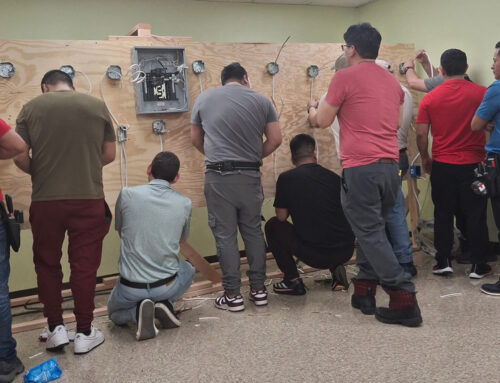
Using Heritage to Serve the Present Age
by Colonel Richard Munn
From the opening and dedication of the gleaming USA East THQ facility in West Nyack, N.Y., in 1990, the territorial Heritage Museum has featured prominently in the building, very deliberately so. Always envisaged as an attractive, interactive feature for the public, the easily accessible center holds a remarkable array of artifacts, photographs, and documents.
 Here you can hold the infamous brick that hit Samuel Logan Brengle on the head; marvel at the flamboyance of Joe the Turk’s tunic, bugle, and umbrella; catch your own photograph with cadet sessionmates or fellow Star Lake music campers; and much, much more.
Here you can hold the infamous brick that hit Samuel Logan Brengle on the head; marvel at the flamboyance of Joe the Turk’s tunic, bugle, and umbrella; catch your own photograph with cadet sessionmates or fellow Star Lake music campers; and much, much more.
You’ll notice an immediate warmth and engagement as the inviting space draws you in to a colorful, action-packed story.
At the nerve center these days is the affable Robert Jeffery, always ready to greet you and your family or corps delegation with a smile for short or more detailed tours. A treasure trove of insights, stories, and anecdotes flow from Rob with ease, good humor, and spiritual energy.
SAconnects had the chance to catch up with Rob recently for an update on the life and pulse of the museum.
You originate from Canada—how did your journey to the U.S. come about?
I grew up in a Salvation Army home in Nova Scotia, Canada. My parents tell me that I actually went forward for salvation at the age of 7 at an Old Orchard Beach Camp Meeting. We drove down to attend them every so often. Post-college, I went to work for The Salvation Army in Canada where I served in corps ministry, social services, and as a writer/researcher for the Ethics Centre. One day in the fall of 2014, I saw a job opportunity posted online to work in the Program Section of the USA Eastern Territory. I prayed out about, talked to my wife, Samantha, about it, and applied. I was greatly surprised to receive an interview followed by an acceptance letter. After completing the immigration process, we moved to the U.S. in 2015. It completely changed my life’s trajectory! We now are the proud parents of two little New Yorkers who bring such joy into our lives.
What roles have you served in the USA East in that time?
For five years I worked as a program resource writer for the Salvation Factory department. We did some amazing projects for the territory, even the international Army, that I’m very proud of. In the fall of 2020, I was offered the role of Heritage Museum director. It was truly a match made in heaven. My great love of Salvation Army history could now be used in an occupation. I am so thankful to those in leadership who saw this potential in me.
What is the mission of the Heritage Museum?
I developed a mission statement for the Heritage Museum during the COVID-19 pandemic when we were still wearing masks to work. It’s an acronym that spells out PPE. I’ve kept using it because I think it’s still relevant:
- Preserve Salvation Army history.
- Promote Salvation Army history.
- Equip Salvationists to engage in the present-day mission of The Salvation Army.
What current missional insights have you gleaned by interacting with the historical contents of the Heritage Museum?
There was never a time in Salvation Army history when people felt they were in the “good old days.” It was struggle after struggle with many great challenges to overcome. Also, though we tend to focus on the big personalities of our history, it was really the work of everyday, unknown Salvationists who made the Army into what it is today. If we can take anything from our “great hearts,” we can take their determination and their joy in service.
What are your favorite artifacts or documents in the center?
No fair! That’s like asking, which child is your favorite? I would say the binders and binders of letters we have between Evangeline Booth and Commissioner Alex Damon. They were lifelong friends, and they started a professional correspondence when he was just a lieutenant. What a lesson in leadership these letters reveal.
The lock of Founder William Booth’s hair, though not my favorite, garners a lot of attention on the museum tours, along with his teacup and writing instruments. People enjoy the more unusual things like this.
Do you have any concluding words of insight or exhortation for our readers?
If you don’t enjoy Salvation Army history, that’s okay. History is more than just dates and events: It is storytelling. I can guarantee you there is a Salvation Army story from our past that is tailor-made for every type of person. Be open to finding those stories and learning from them.
If you do enjoy Salvation Army history, wonderful! But I caution you against falling into pure nostalgia and comparing the Army of today with the Army of the past. Our history should mobilize us to engage in the mission of today. As Charles Wesley so beautifully wrote, “To serve the present age, my calling to fulfill.”
Thank you, Rob—SAconnects is cheering you on, hoping to give you even more heroic and inspiring stories from our own future work and archives.




